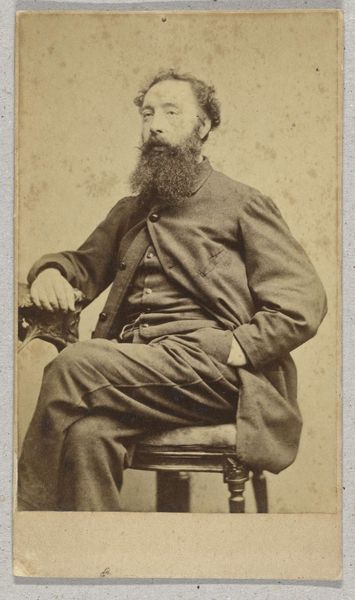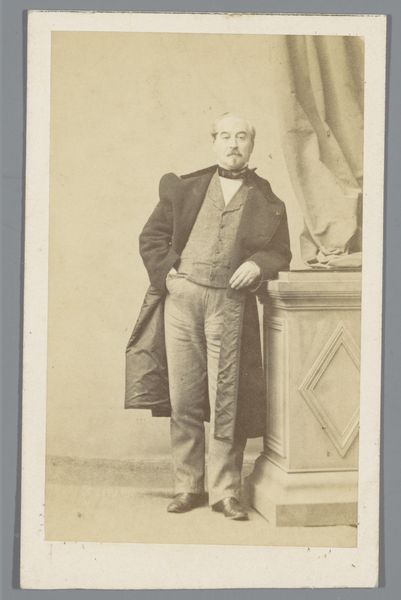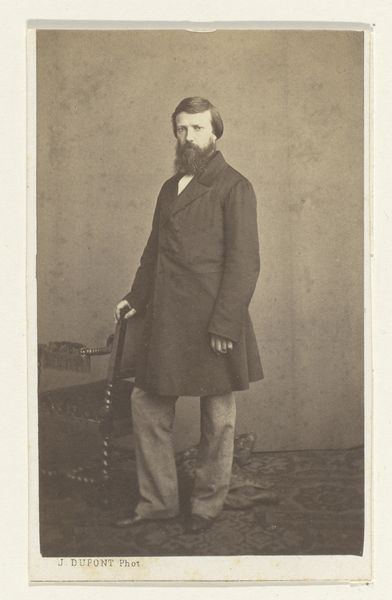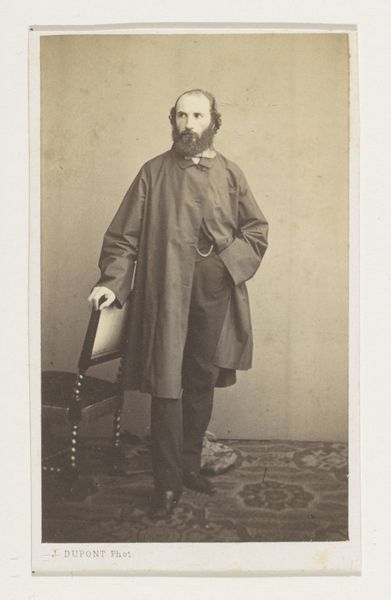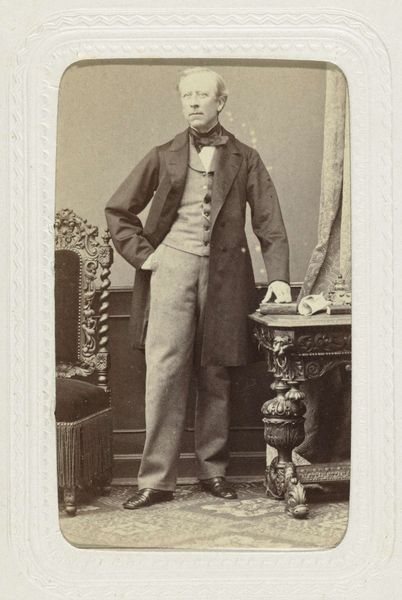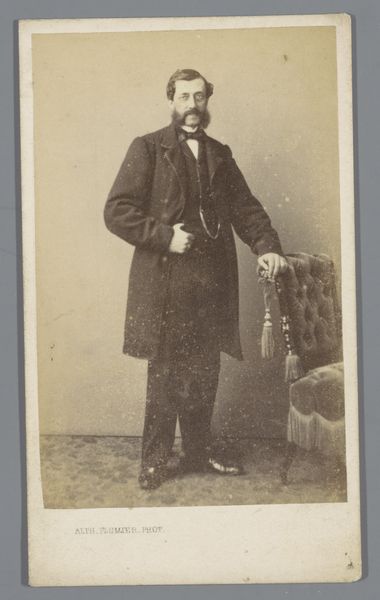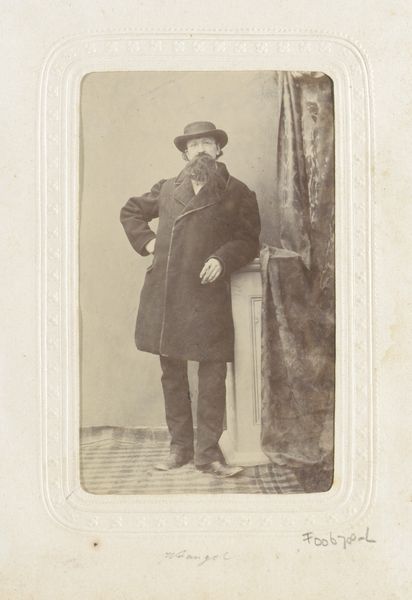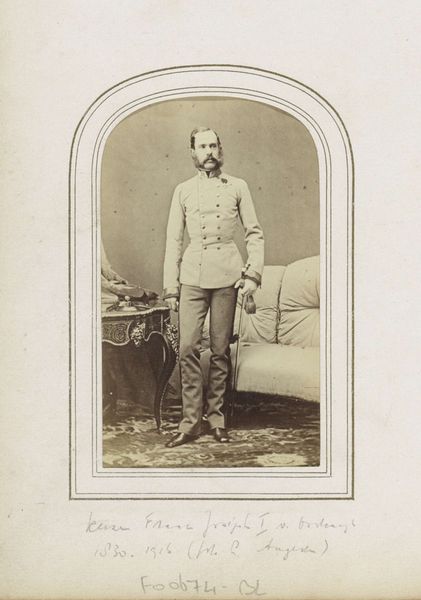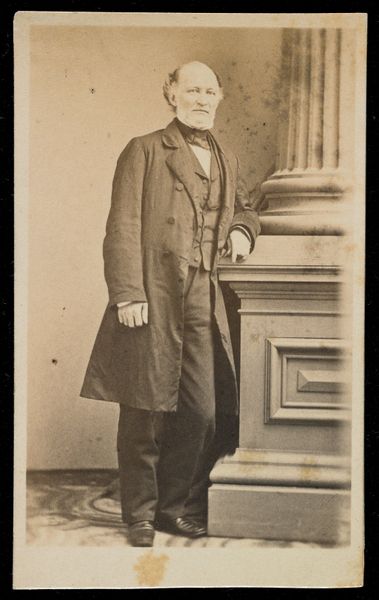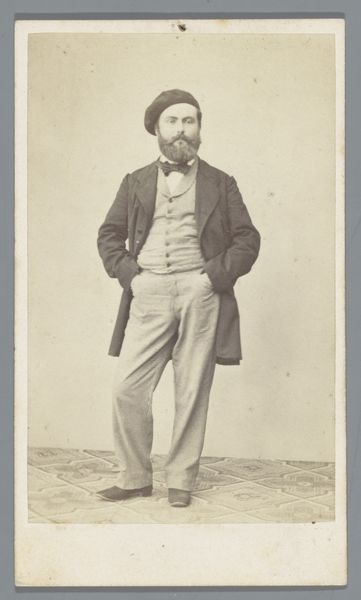
daguerreotype, photography, gelatin-silver-print
#
portrait
#
portrait image
#
daguerreotype
#
photography
#
historical photography
#
gelatin-silver-print
#
19th century
#
realism
Dimensions: image/sheet: 8.6 × 5.7 cm (3 3/8 × 2 1/4 in.) mount: 10.1 × 6.1 cm (4 × 2 3/8 in.)
Copyright: National Gallery of Art: CC0 1.0
Editor: This is an intriguing portrait! It’s a gelatin-silver print titled "Portrait of a Man," taken around 1860 by Brady's National Photographic Portrait Galleries. The man seems rather imposing, especially with his tall hat. What story does this image tell from a historical perspective? Curator: Well, seeing this photograph through a historical lens immediately makes me think about the rise of photography's role in shaping public figures and perceptions during that era, particularly around the Civil War. Editor: How so? Curator: Brady was a master of self-promotion and understood photography's power in crafting an image. His galleries offered portraiture to a burgeoning middle class and aspiring politicians. Consider the deliberate pose of the man, the meticulously rendered clothing, the symbolic, almost staged nature of it all. Do you think that conveys authenticity, or something else? Editor: Something else, I think! It feels…constructed. Like he's playing a role. Perhaps trying to project power or status. Curator: Exactly. This portrait isn't just a likeness; it’s a constructed identity designed for public consumption, furthering a particular social standing. The rise of photographic studios allowed more people to participate in image-making, yet it also reveals an awareness of performance and how one is seen. The portrait studio became an important social space. Editor: I see. So it’s less about who he *was*, and more about who he wanted people to *think* he was? Curator: Precisely. The photograph provides us a glimpse into the self-fashioning prevalent during a time of huge political and social shifts. It forces us to confront questions about representation, identity, and how both can be manipulated through visual media, which were questions deeply relevant then, and even more relevant now. Editor: This has definitely changed how I see this piece, and, really, all photographs from this era! Curator: Indeed. Photography offers us these captivating reflections on our ever-evolving engagement with image, power, and social dynamics.
Comments
No comments
Be the first to comment and join the conversation on the ultimate creative platform.
